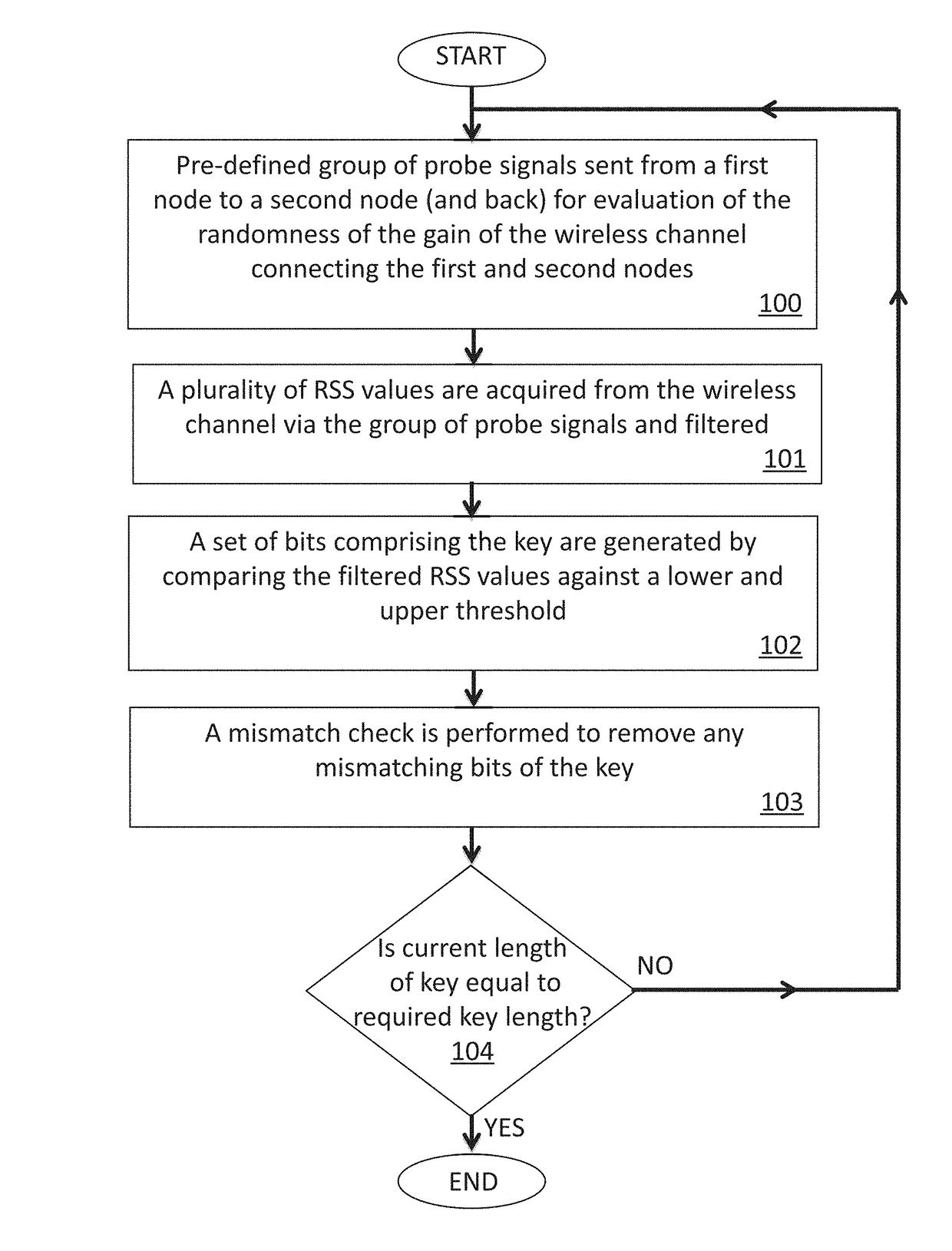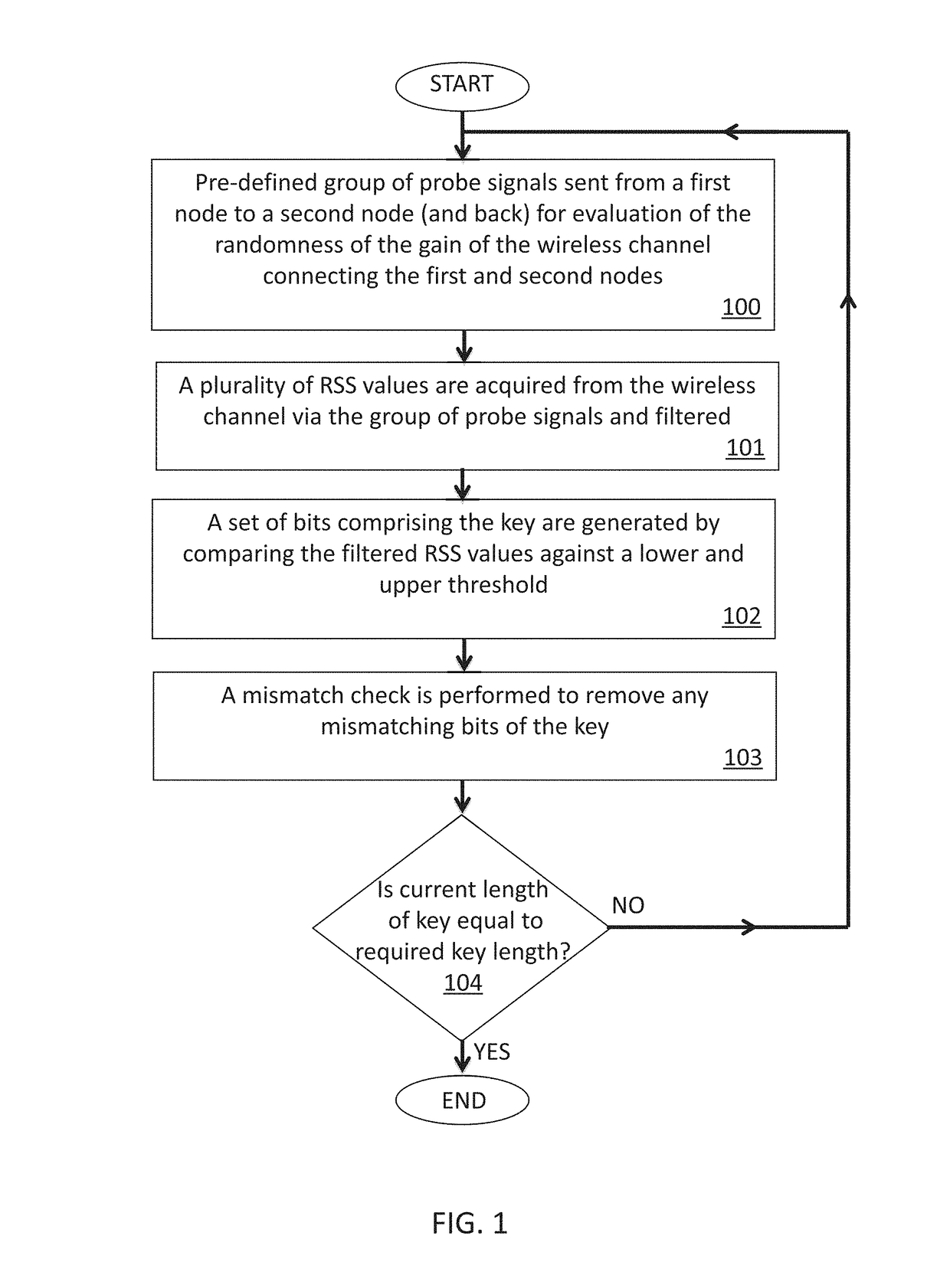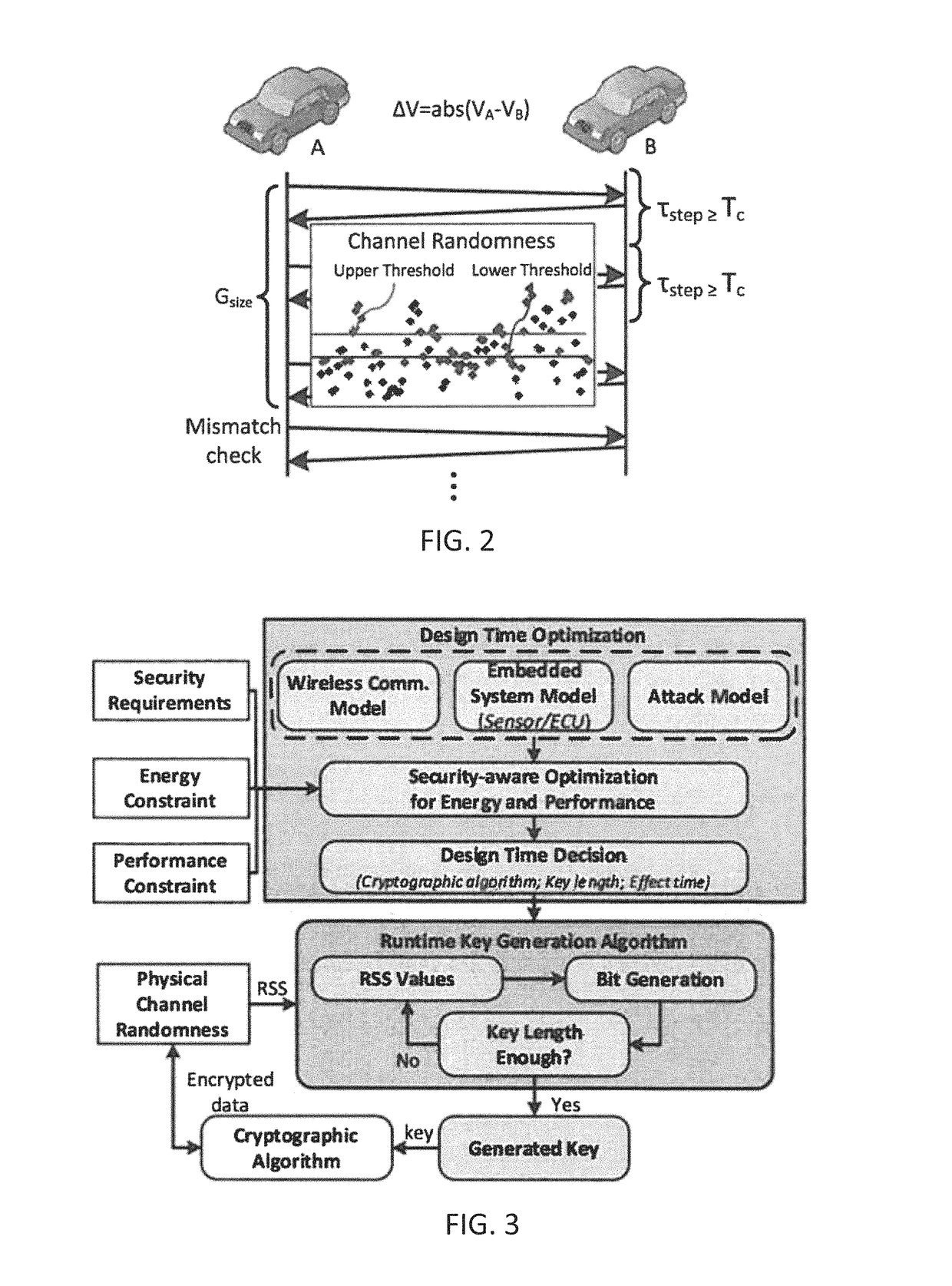Secret key for wireless communication in cyber-physical automotive systems
a wireless communication and cyber-physical automotive technology, applied in wireless communication, transportation and packaging, and securing communication through chaotic signals, etc., can solve the problems of both communicating parties having to share a secret key, the total weight of the vehicle and the complexity of adding newer features, and the potential security threat to millions of automobiles, etc., to achieve the effect of low cos
- Summary
- Abstract
- Description
- Claims
- Application Information
AI Technical Summary
Benefits of technology
Problems solved by technology
Method used
Image
Examples
Embodiment Construction
[0056]Referring now to FIGS. 1-14, the present invention features a method providing a key generator to effectively secure wireless automotive communications between two communication nodes. One or both nodes may be a vehicle. To illustrate, the communication may be vehicle-to-vehicle or vehicle-to-infrastructure. To further illustrate with the vehicle-to-vehicle wireless communication shown in FIG. 2, Alice's automobile (A) is communicating with Bob's automobile (B) during driving. Assume the driving speed for A and B is VA and VB, respectively and the speed difference between these two moving automobiles is ΔV, the coherence time, Tc, of the wireless communication channel between A and B may be estimated using:
[0057]fd=ΔVcf0,(1)Tc≈0.423fd,and(2)ΔV=VA-VB,(3)
where fd is the maximum Doppler frequency during the communication process, c is the speed of light, and f0 is the communication frequency (see Exploiting Wireless Channel Randomness to Generate Keys for Automotive Cyber-Ph...
PUM
 Login to View More
Login to View More Abstract
Description
Claims
Application Information
 Login to View More
Login to View More - R&D
- Intellectual Property
- Life Sciences
- Materials
- Tech Scout
- Unparalleled Data Quality
- Higher Quality Content
- 60% Fewer Hallucinations
Browse by: Latest US Patents, China's latest patents, Technical Efficacy Thesaurus, Application Domain, Technology Topic, Popular Technical Reports.
© 2025 PatSnap. All rights reserved.Legal|Privacy policy|Modern Slavery Act Transparency Statement|Sitemap|About US| Contact US: help@patsnap.com



